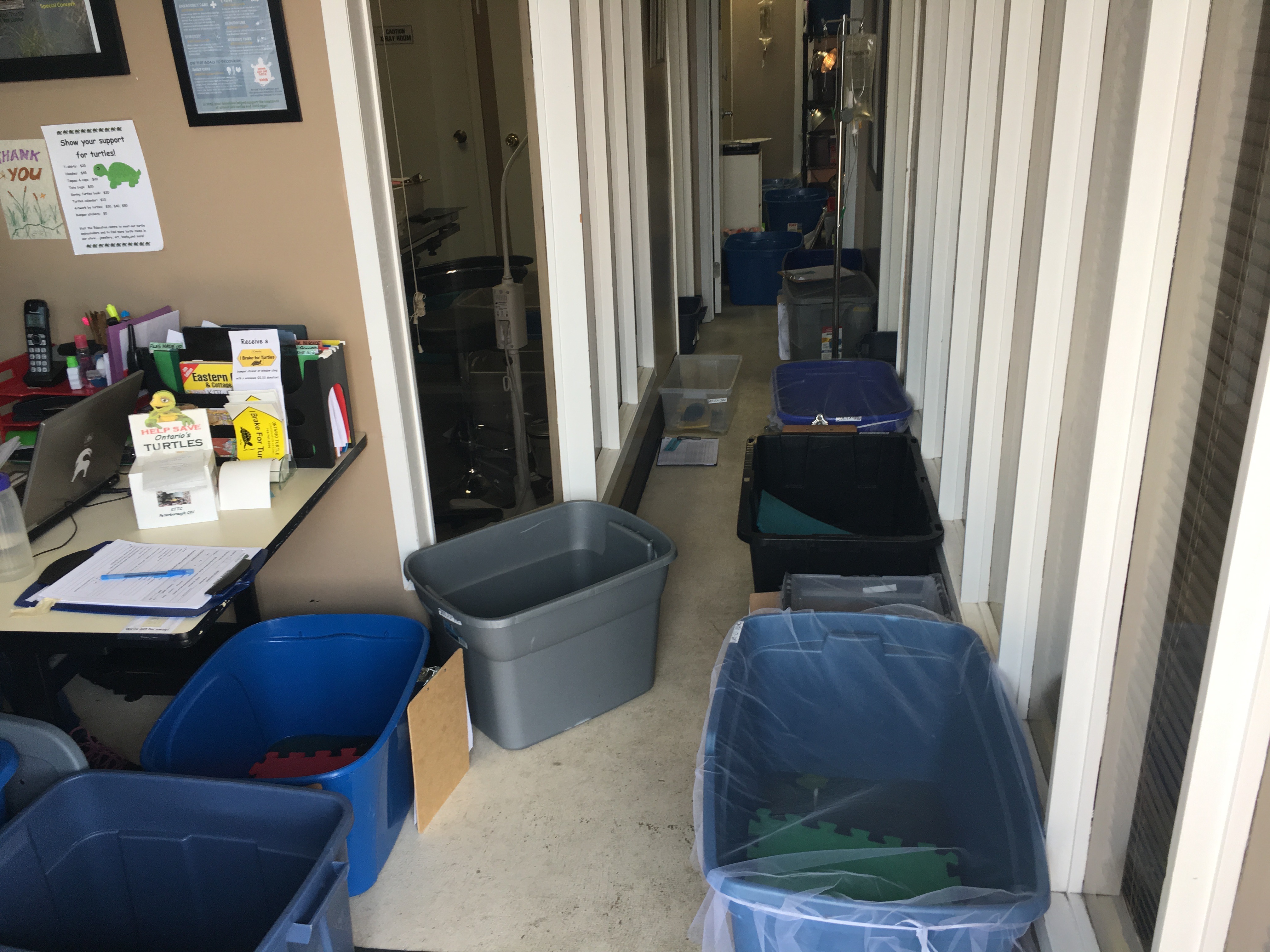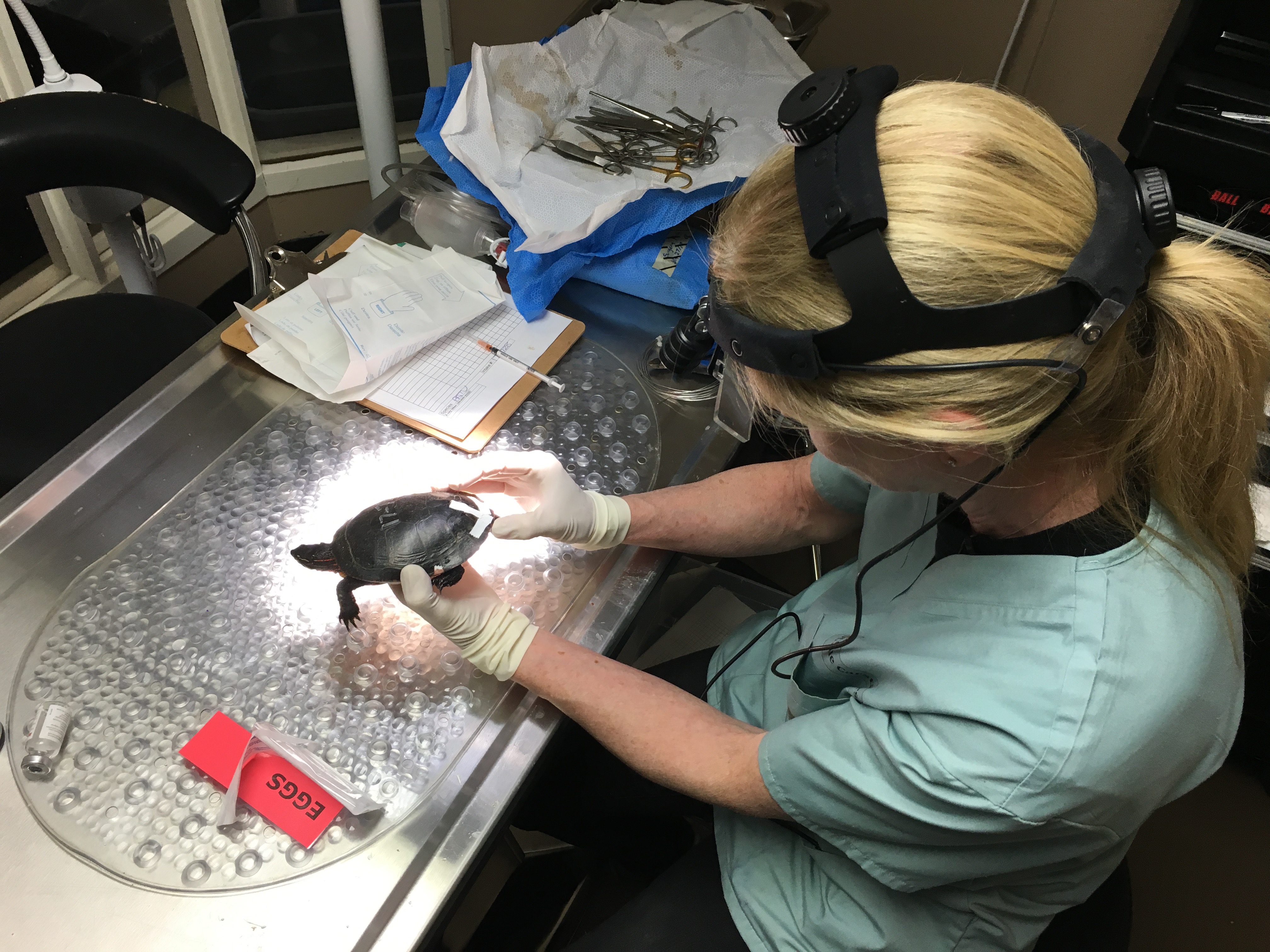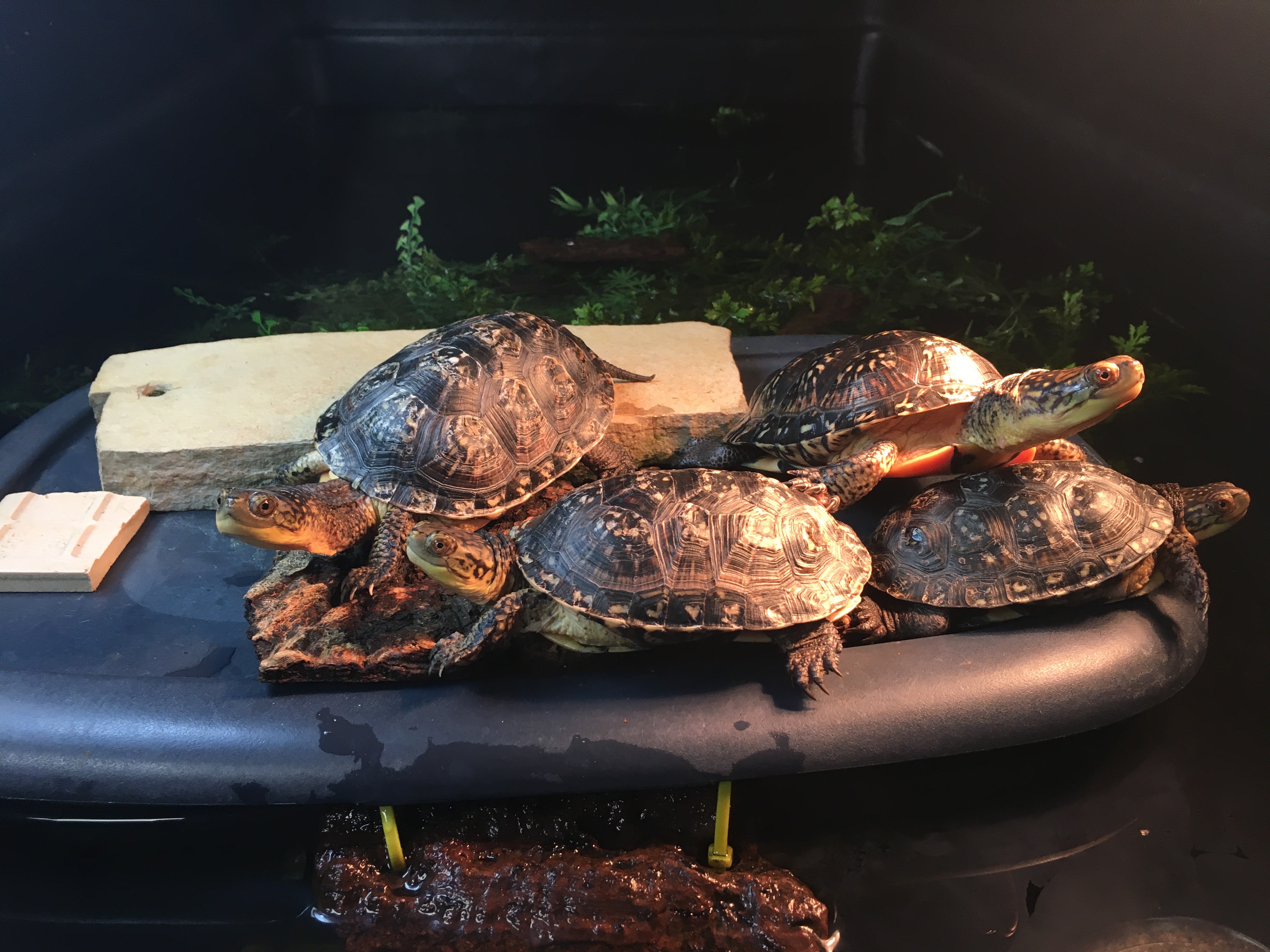Inside a Hospital For Turtles
Credit to Author: Jordan Pearson| Date: Mon, 07 Aug 2017 13:00:00 +0000
The average turtle is a doomed creature.
Many species of turtles can live for about as long as humans do, upwards of 50 or 60 years. Many of them don’t get nearly that far. Basically everything is trying to eat them, and most turtles have no defenses except for their shell. Their habitats are being degraded by humans, and they have to watch out for cars. A turtle has to stay alive for anywhere from eight to 25 years before it’s mature enough to reproduce. According to turtle surgeon Sue Carstairs, whom I spoke with at the Ontario Turtle Conservation Centre in Peterborough, Ontario, a two-hour drive east of Toronto, a mature female may lay 1,500 eggs before one of her babies has a chance at growing up to be as old as she.
Read More: Researchers Are Using Vibrators to Give Turtles Boners
Maybe, millions of years ago, every turtle had a fighting chance at making it to the ripe old age that nature intended, but not since people showed up. In southern Ontario, seven out of eight species are listed as being at-risk; Ontario happens to have both the most turtles in all of Canada, and the most roads, Carstairs said.
If the scene at the Conservation Centre (where injured turtles are operated on and rehabilitated) was any indication, it’s not going well for them.
The Conservation Centre is tucked away in a strip mall next to a country road where the units are marked with numbers on their awnings instead of the names of businesses. The centre is about the size of a small dentist’s office, and it’s flanked on either side by small accountant’s offices and small computer system sales centres. Did I mention that it’s small?
When I got there, nearly every square inch was littered with plastic bins containing recovering turtles chilling in a bit of water. The hallway was lined with them, an office containing a microscope was stuffed to the gills with turtles in bins, and even the operating room managed to fit several post-op turtles. Some were grody old snapping turtles the size of a dinner plate, and some were the much smaller (and cuter) painted turtles that are common in Ontario. Just getting around the place required a good bit of careful coordination.

As Carstairs and I gingerly stepped around the obstacle course, I told her that I felt a bit sad for the turtles, since I’ve never gotten the impression that they’d done anything bad to anybody pretty much ever. The doctor agreed, adding: “Unfortunately, they have to live with humans.”
The scene would have been gnarly if it were a human hospital, but thankfully (for me) this was a hospital for turtles. Some of the patients had little bandages on their shells, and the worst injury I saw was an amputated flipper, which was kind of cute in its own, pitiful way?
Almost every injury was the result of a turtle being run over by a car, Carstairs said, and the “before” photos of what that looks like aren’t for the faint of heart. Most of what Carstairs does involves using a dental drill to put tiny holes in the turtle’s split shells and closing them up with orthopedic wire, or crazy glue. The turtles do the rest of the healing.
The centre, a registered charity that mostly runs on private donations and volunteers, is clearly being stretched to its limits this year. According to Carstairs, when she started at the centre a decade ago, it received about 30 turtles a year. When I visited the centre, Carstairs said that they were currently hosting 1,000 patients and 3,000 eggs.
Read More: This Small Town in Canada Spent 10 Years and $2.7 Million to Save Turtles
The uptick is due in part to outreach efforts that have more people bringing in injured turtles, Carstairs said, but can mostly be attributed to this year’s optimal temperatures. The temperate weather has them feeling so good that they’re moving around more often, she said, and so they’re on the roads more.

The influx of patients has the centre looking for some creative ways to use their slight resources. While I chatted with Carstairs in the educational garden behind the centre, a couple burly guys wearing pool company shirts showed up and started watering a couple of the resident turtles.
“They’re doing us a favour because our landlord complains that we use too much water, and they’re from the pool company next door,” Carstairs said, laughing a little. “I think somebody must have sweet-talked them.”
The best way to keep turtles from landing on her operating table, Carstairs said, would be to build tunnels under major roads for turtles to pass safely through. These are known as “ecopassages,” and Ontario has already built a handful. Until those are widespread, however, Carstairs said that the best thing people can do is not hit turtles with their cars. Instead, you should attempt to safely avoid them or even usher them across the road while wearing a brightly-coloured safety vest.
Please, respect turtles.

Get six of our favorite Motherboard stories every day by signing up for our newsletter.